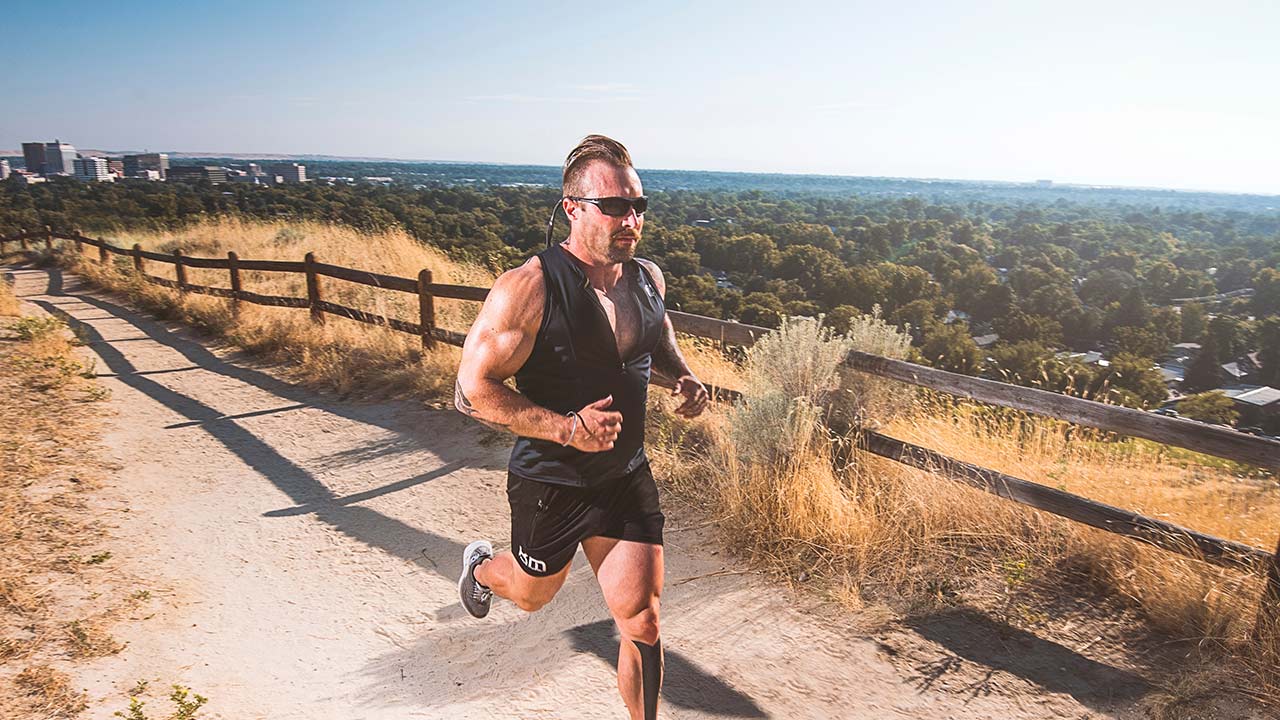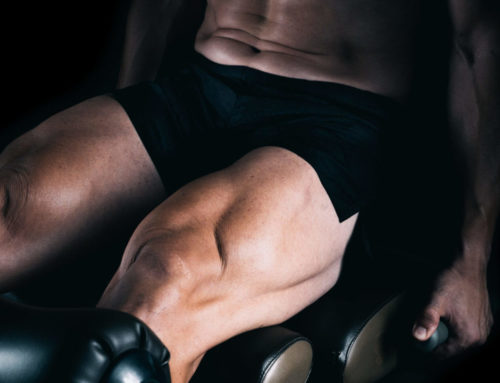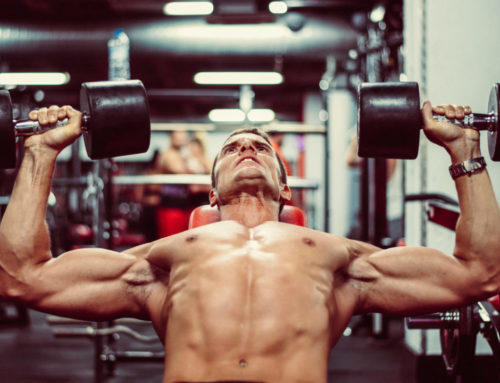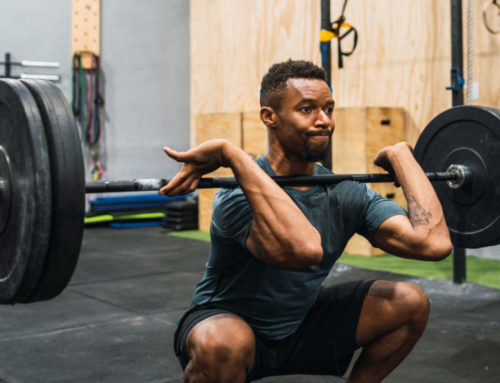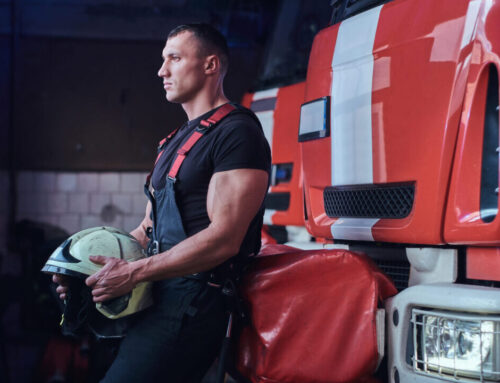With decades of bodybuilding under his belt, here’s how a hybrid athlete can tweak things to build muscle running, while burning fat and getting fitter.
Author: Kris Gethin
Nutrition consultant, trainer and CEO of Kaged Muscle
Build muscle running: can bodybuilding even work with running?
The vision of seeing a heavy, muscled athlete – who has invested decades pumping iron – pelting along a trail like a skinny endurance runner is a rare site.
Ironically, this is because most bodybuilders believe running is evil, yet I have found it to be useful!
Any prolonged aerobic exercise, which exceeds the standard “power walk” is thought to be catabolic by most of the bodybuilding community.
In 2017 my ambition was to prove this myth wrong by competing in IRONMAN events, while simultaneously chasing my usual bodybuilder goals.
Some said it was impossible. Six months later, they were silenced as I completed in my first IRONMAN while building muscle mass and losing body fat.
Not only had I learned it was possible to develop muscle while doing intensive endurance training, I also discovered it’s potent fat burning potential.
Here’s how running can help bodybuilders burn more fat while maintaining muscle.
How to run, burn fat and keep your hard-earned muscle
To stay in the coveted “fat burning zone”, the aim is to remain in the sub-lactate threshold where the body isn’t accumulating huge amounts of lactic acid.
This would make the exercise “anaerobic.”
For long-distance runs, I like to keep my heart rate at 70-80% of its maximum output, which allows me to develop better lactic buffering properties as I get fitter.
The truth is, 80% of maximal work rate isn’t an exact science when aiming to remain under the lactate threshold. Studies actually show athletes hit this threshold at 90% of their output.
By expanding my sub-lactate threshold capacity, I’m able to work at this rate for longer, covering more distance, which burns more calories.
Even at a very slow pace, a 200lb man burns more than 750 calories per hour.
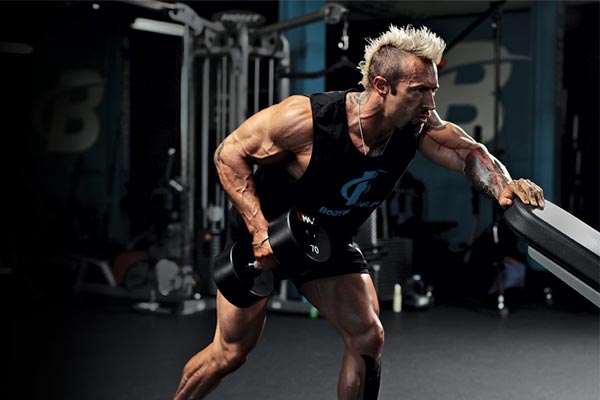
By developing a better sub-lactate threshold I’m able to run faster without hitting the lactate wall, meaning my calorie expenditure can exceed 1,000 per hour when running.
This is a great way to burn calories within an hour, as opposed to more conventional bodybuilding cardio like power walking.
I’ll include a distance trail run after a leg workout because of the pre-exhaustion this provides: it covers less distance while getting the same calorie burn.
I will also drink Fermented Glutamine and Fermented BCAAs during my runs to negate catabolism.
Periodize your running for increased fat loss, fitness and muscle
It’s beneficial to develop aerobic fitness so the entire workout remains sub-maximal; this can help the body tap into fat stores more readily.
Periodized training is the fastest way to build a better aerobic foundation, so within my running program, I will use shorter, more intense uphill trail runs to increase my aerobic fitness closer to my lactate threshold.
Other runs will be longer, but less intense to build more stamina. When I complete the same run, the aim is to go slightly faster without hitting the lactate threshold to improve my aerobic fitness.
Hit faster intervals when running
Moving into the anaerobic training threshold with high intensity running intervals, a great deal of calories are burned hours after the workout to replenish the oxygen debt this type of training creates.
Although this style of training is not aerobic, it has helped enhance my anaerobic threshold, so when I go back to sub-lactate low impact distance runs, I’m able to run at a faster pace without accumulating too much lactic acid.
Both types of running go hand in hand, helping me become a fitter athlete who can burn more calories without fatiguing as quickly.
An interval workout might consist of 20-second all out hill sprints, followed by 40 seconds slow paced walking back down, repeated 20 times.
This might then lead into a long distance run using pre-exhaustion tactics, such as a leg workout, to further challenge my body.
Look after your running form as you would your bodybuilding form
Running form becomes even more important for heavy bodybuilders to preserve joint health, and developing the right running form took time.
Forefoot striking helped me reduce pressure on my knees, Achilles tendons, hips, back and feet, and wearing footwear with higher heels teaches a heel strike movement pattern.
This makes the front of the foot slap into the ground, exposing the entire kinetic chain to severe pressure, which increases the risk of injury.
Learning to forefoot strike takes time, but you should avoid the temptation to heel strike for longevity as a bodybuilder who participates in endurance running.
It is also best to land on the standing foot with a slight bend in the knee.
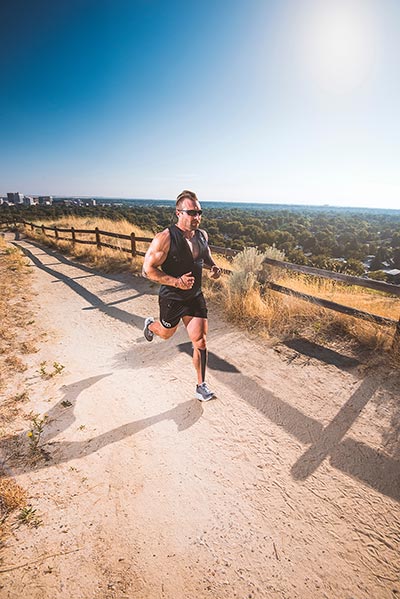
Fighting muscle fatigue while running with the right nutrients
With more muscle tissue to feed, the chances of fatigue sabotaging performance are exponentially higher for bodybuilders while running.
My remedy is to be adequately fueled in advance from slow-burning carbs, some fats and of course protein to prevent excessive catabolism.
Hydration is just as important, which is why I go one step further than simply drinking large amounts of water, adding Kaged Muscle Hydra-Charge, a natural flavoring system, which contains calcium, magnesium, potassium, phosphorus and sodium.
Taurine has been added because of its positive impact on focus, and the blend of antioxidants help buffer the free radical damage I amass when out running.
The final word on how to build muscle running
Supported by the right diet and supplements, running can help burn fat quickly. When combined with weight training, it demands more stringent eating and discipline to support muscle recovery.
However, the benefits are worth it.
Not only does it make my heart healthier, the increase in fitness means that while weight training, I am able to work out with even greater intensity which benefits building muscle.
My advice is to start utilizing running alongside your bodybuilding training and become a more rounded athlete.
For similar content on how to build muscle running, nutrition tips, and training advice, get TRAIN magazine direct into your inbox every month for free by signing up to our newsletter


